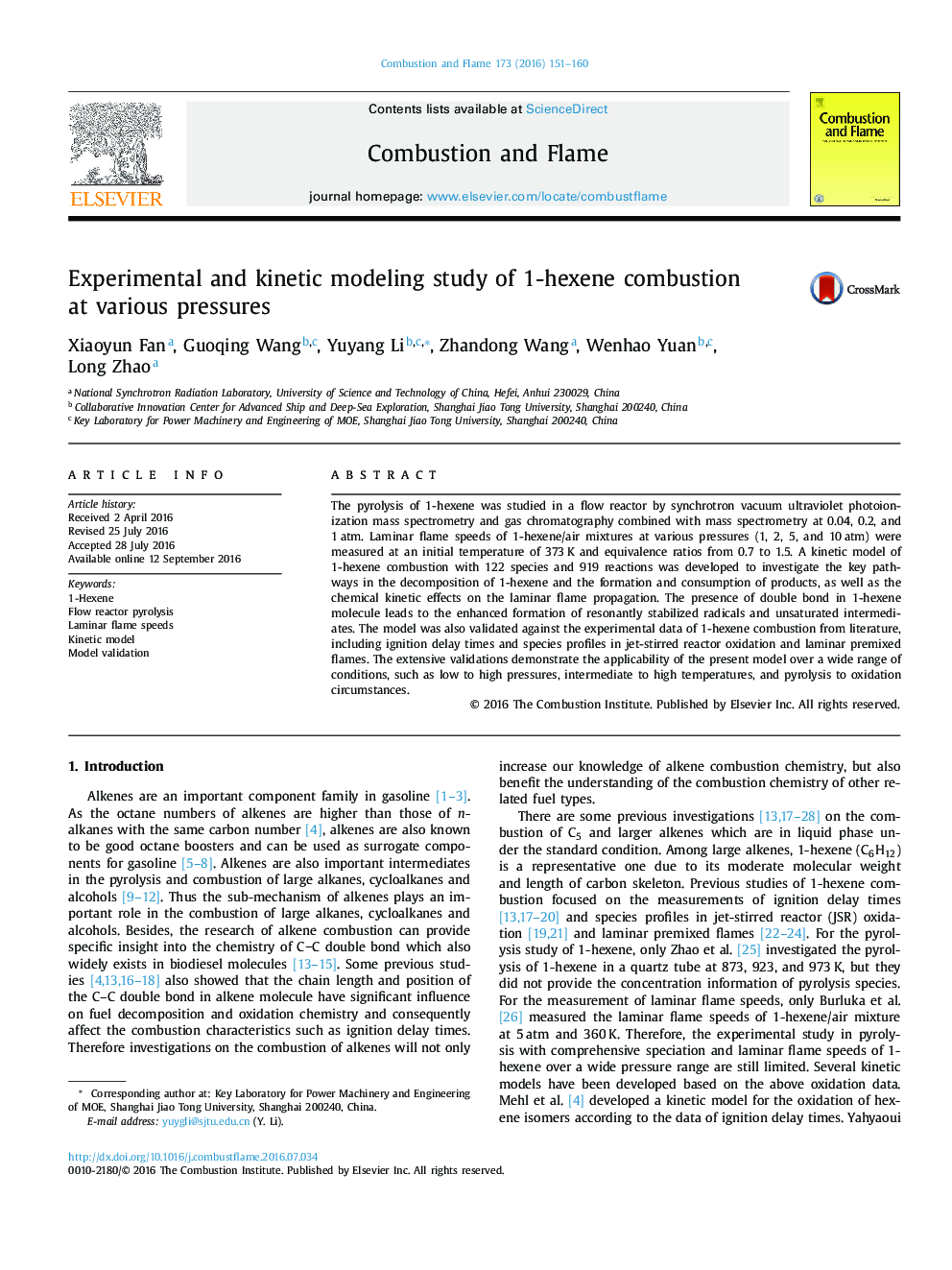| Article ID | Journal | Published Year | Pages | File Type |
|---|---|---|---|---|
| 6468340 | Combustion and Flame | 2016 | 10 Pages |
The pyrolysis of 1-hexene was studied in a flow reactor by synchrotron vacuum ultraviolet photoionization mass spectrometry and gas chromatography combined with mass spectrometry at 0.04, 0.2, and 1Â atm. Laminar flame speeds of 1-hexene/air mixtures at various pressures (1, 2, 5, and 10Â atm) were measured at an initial temperature of 373Â K and equivalence ratios from 0.7 to 1.5. A kinetic model of 1-hexene combustion with 122 species and 919 reactions was developed to investigate the key pathways in the decomposition of 1-hexene and the formation and consumption of products, as well as the chemical kinetic effects on the laminar flame propagation. The presence of double bond in 1-hexene molecule leads to the enhanced formation of resonantly stabilized radicals and unsaturated intermediates. The model was also validated against the experimental data of 1-hexene combustion from literature, including ignition delay times and species profiles in jet-stirred reactor oxidation and laminar premixed flames. The extensive validations demonstrate the applicability of the present model over a wide range of conditions, such as low to high pressures, intermediate to high temperatures, and pyrolysis to oxidation circumstances.
